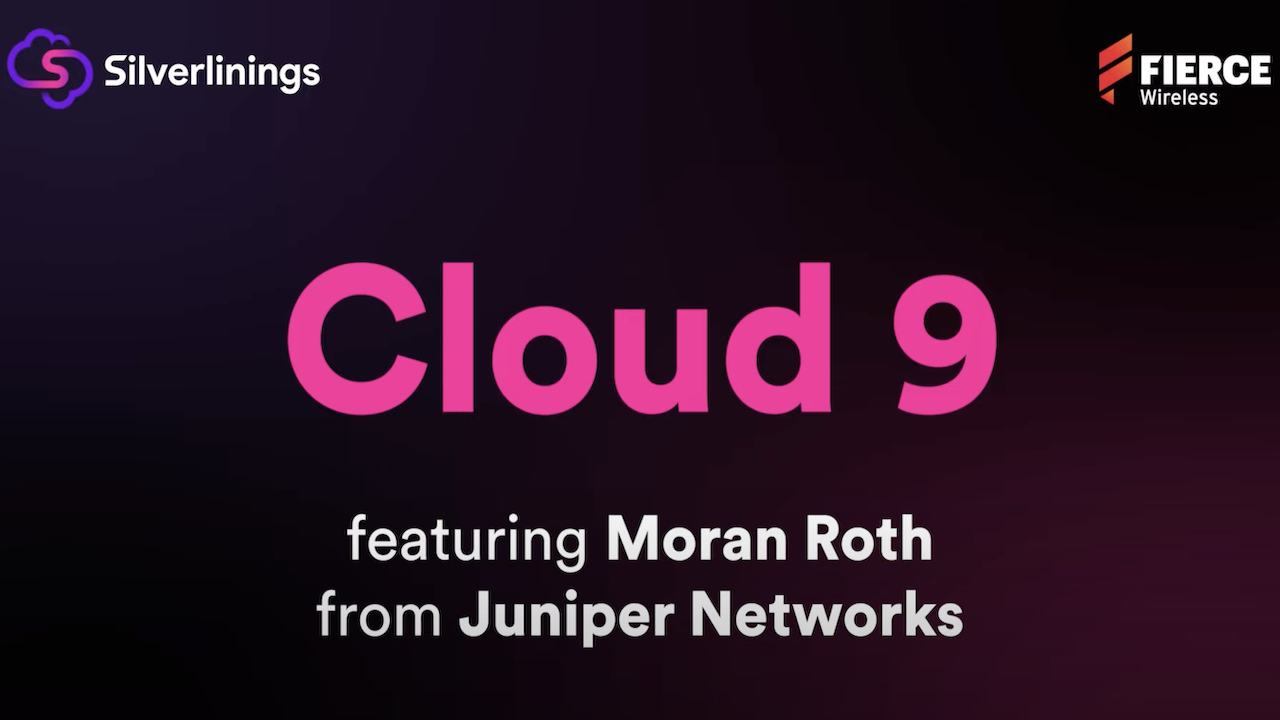Delivering on the Promise of IPoDWDM


How to get the most from the IPoDWDM revolution.
Are you up to speed on the dramatic advancements in IPoDWDM that have transformed the IP-optical networking industry? Watch for the key benefits and use cases that propel service providers, cloud operators, and other large network operators to transform legacy IP-optical networks to a converged IPoDWDM architecture.
See our Converged Optical Routing Architecture Solution page.
You’ll learn
How eliminating transponders can save network operators 40% on CAPEX and 50% on OPEX costs
How eliminating hardware can generate more than 75% carbon footprint savings
Who is this for?
Host

Guest speakers

Experience More
Transcript
0:00 Hey, I'm Steve Saunders on Cloud9. Now, it's been over two decades since the telecom industry was transformed by the introduction of IP over DWDM. But the last years have seen some dramatic advances in this technology in the field of coherent optics, which now provides the critical foundation of today's cloud services and hyperscaler networks. Well, here with me today to talk about these developments is Moran Roth, Director of Product Management for Optics at Juniper, a company that has played a leading role in driving improvements in optical networking technology. Moran, welcome. 2
0:46 Hi, Steve. 1
0:47 Now, historically, the big improvements in optical networking have been around speed, right? But I understand there's a lot more happening here than just spectral efficiency or greater optical capacity. Can you tell us about that? 2
1:00 Absolutely. Here we are talking about IP over DWDM. And by this term, we mean the ability to integrate coherent technology that can serve high capacity and long reach data transmission into a small form factor pluggable transceiver. This is the same footprint that is used for short reach interconnect. And the ability to mix and match short reach optics and these new coherent transceivers in the same router line card is a game changer. 1
1:34 So when you say pluggable, it's plugging into what? It's plugging into a line card or it's plugging into the router? Where's it going? 2
1:42 It can plug into a pizza box router or it can plug into a line card in a router chassis. Before the pluggables came along, 1
1:52 and by the way, they sound really cool. What did we used to do? We'd have a separate optical rack to handle this type of this type of performance? 2
2:05 Exactly. There was a separate shelf that housed the optical transponder with the long reach optical interfaces that were on board on that chassis. Today we can do the same technology form factor pluggable, eliminating essentially these dedicated shelves. 1
2:27 And that saves space, obviously. But is there a total cost of ownership benefit, a TCO benefit to your customers who are installing this? 2
2:39 Absolutely. We did a model of the TCO savings achieved by network operators that move in this new architecture. And we found out that by eliminating the transponders, network operator can save more than 40% on CAPEX, and more than 50% on OPEX that includes power and space. 1
3:10 Well, that's very exciting. Obviously, that's a fantastic saving. We hear a lot about carbon footprint now. Is that one of the benefits here? Is there less power being used in the data center and in the optical network infrastructure using these pluggables? 2
3:30 The elimination of hardware eliminates a lot of carbon footprint that is associated with the manufacturing of this hardware, and the reduction in overall power consumption across the life of the network eliminates a lot of the carbon footprint associated with that footprint and in our modeling we found that savings on carbon footprint can be more than 75 percent. That's extraordinary and obviously 1
3:58 I'm assuming most of this equipment is installed in a data center, is that right? 2
4:05 It can be installed in a data center, it can be installed in a co-location, again, wherever routers are installed today. 1
4:15 Yeah. When I started writing about optical, these were huge devices. It took up a lot of room. Now, we're talking about a pluggable form factor, which is extraordinary in itself. But how fast can these run? I mean, what's the maximum speed that a pluggable could handle now, today? 2
4:34 Today, we are talking about 400 gig technology. So these small form factor pluggables can run at 400 gigabit per second. 1
4:45 Right, I mean, that's remarkable, but what sort of distance do you get, like three feet? I mean, I know it's performance goes down in proportion to distance. I mean, is this something that I could use in a metro application, for example? 2
5:05 Yes, that's a really good question because when we talk about transmission and the router, interconnecting routers, typically we're talking about short reach or when we talk about long reach, we mean 10 kilometers. Here, in this case, for coherent technology, we are talking about hundreds of kilometers. So definitely applicable for metro networks. 1
5:32 What's the technology which is eliminated here? I understand that we used to use very expensive line cards for this, but does this new technology also mean that we don't need, for example, to use different types of mobile technology or high-speed microwave technology in networks anymore? Is that something which could be replaced by this, or are those different markets? 2
5:58 It's different markets, but I think it's complementary markets because what we see today is the extension of the applicability of this technology from metro network and data center interconnect, it reaches off a few hundreds of kilometers to the access network with lower capacity. So having a hundred gig interfaces, but that can span 100 kilometers, or even 300 kilometers, and really serve this access network where the capacity is growing dramatically with 5G mobile technology. 1
6:39 That makes a lot of sense. Are pluggables, does every company that makes a pluggable do it in its own unique way? Are they proprietary? That's another change that 2
6:54 happened in the market with this introduction of the transceivers, of this coherent transceivers, because in the past when we talked about these shelves that house this dedicated optical transponders, this was proprietary. You had to bookend those transponders from the same vendor. Today, with this standardization of the transceivers, 400GZR, ZR+, the OIF, and the OpenZR+, multi-source agreement, you can interoperate across the link between different vendors. 1
7:33 That's extraordinary. That's a big breakthrough. I mean, and I can see why that would be great news if I was a service provider, even a large enterprise, certainly a hyperscaler. But why is interoperability a good thing for Juniper? 2
7:48 Juniper is very active in all the standardization work because it improves business outcomes. Easy interoperability between these transceivers allow easy integration and rapid service delivery. Standardization also drives innovation. 10 years ago, no one imagined that we can pack 400 gig of coherent technology into such a small form factor. The 400 gig ZR project that started in 2016 at the OIF, delivered, and now we see how this dramatically changes the economics of the network. 1
8:33 I mean, it just seems like what's good for your customers is also good for you as a solution vendor for them and for the industry generally. This has been really interesting. Where can people learn more about what Juniper is doing with pluggables. 2
8:52 In our website juniper.net, we have a solution page under CORA, Converged Optical Routing Architecture, where we have a lot of material, white paper, blogs that explain the solution. 1
9:07 That's fantastic. I really appreciate your time today. It's a fascinating technology and a huge breakthrough for the telecom industry, but also for the cloud industry, which is obviously what Silver Linings is focused on. Moran, congratulations, and thanks so much for joining me today on Cloud9. 2
9:23 Thank you, Steve. 3
9:24 Thank you. Thank you. Thank you. Thank you. Thank you. Thank you. Thank you. Thank you. Thank you. Thank you. Transcribed with Cockatoo



















